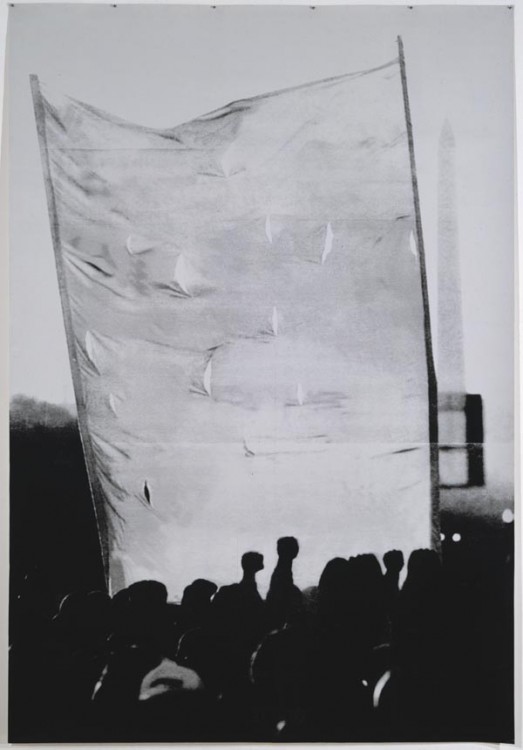Collection Rotation: Elizabeth Sims
In our regular feature Collection Rotation, a guest selects from SFMOMA’s collection works online. This fall artists with Bay Area ties take over the series. In addition to their rotations, we asked each artist to answer poet Robert Duncan’s request to students in his 1958 Workshop in Basic Techniques and provide us with a set of influences for their work — a “constellation of their genius.” Today, please welcome Elizabeth Sims. To find her map, follow the footnote citations.
Much of my work lately has begun at the point of acceptance that a struggle against oppression means a confrontation with our very own identities as reproductive sites of the mechanisms of coercive power [x]. But if there is an enemy within, it feels just like another layer of exteriority. Like a matryoshka doll, we may yet harbor something else inside, beneath or beyond identity: a regenerative creative and communalist potential [1]. If all that appears is instantaneously subsumed within the reigning order, then resistance lies in this element that does not appear, or that manages to disappear.
The artworks selected for this rotation challenge identity, and suggest possibilities for its undoing (not just its reform). They contain investigations into the power of anonymity, practices of detachment, affirmations of decay and disintegration, and rituals of self-immolation. They seem to propose untraditional, esoteric, and alchemical ancestries for a contemporary social movement, one that organizes an occupation not only of public space, but also of the self [2].
Through a process of multiplication and inflation, the artist excised this image of much of its original detail, including the banner text. This enigmatic blank standard, and the amorphous body of its bearers, expresses the power of a temporary withdrawal or refusal of self within massified anonymity [3]. The force of this gesture arises in an absence of demands, from a unity formed in negativity.
Interventions into traditional forms of authorship produce objects that are difficult to locate, that seem to hide something. In Melt Down (After Kirchner: 2), Levine reproduces all aspects of another artist’s work in a way that results in something entirely other, without exposing her own hand [4].
Dedication to processes of death, decay, and transience affirms base corporeality as a transcendental zone of permeability and communion [5] [6] [7].

Toba Khedoori, Untitled (Rooms), 2001, [8]
Meditation and the practices of detachment prompt desertion and ecstatic wandering; losing one’s way as losing oneself [9] [10] [11] [12]. The mantra goes: I am the intermediary between what I am and what I am not [13].
“I paint with my back to the world. I have a vacant mind. I’m not going to interfere.”
— Agnes Martin
(Emptiness is the only self-realization).
Robert Duncan’s request to students in his 1958 Workshop in Basic Techniques. We asked our guests to replace “poet” with “artist”:

In The Collected Books of Jack Spicer, edited by Robin Blaser (Los Angeles: Black Sparrow, 1975), p. 358.
[x] Elizabeth Sims, Woman I (Camille Pissarro, Avenue de L’Opera), 2012
[1] Camille Pissarro
[3] Graffiti and masks from the Oscar Grant riots in Oakland, July 8, 2010
[4] Suzanne Lacy, The Roof is on Fire, 1993-94
[5] Osha Neumann
[6] Jacques-Andre Boiffard, Documents, 1930
[7] George Pfau
[8] Toba Khedoori
[9] Trevor Paglen
[10] Furukawa Taiko, Wall-Gazing Daruma
[11] Glenn Rudolph, Security Guard, 1998
[12] Holy Ghost Panel, 7340—5260 BC, Horseshoe Canyon, Utah
[13] Tiqqun, The Theory of Bloom, 1999-2010
Elizabeth Sims is an artist, writer, and educator in Oakland, California. She has also worked as a collective member of many radical projects and venues in the Bay Area. Her work has been exhibited throughout California, in galleries such as Royal Nonesuch Gallery and MacArthur B Arthur as well as in nontraditional venues. Her social practice projects, art objects, and published articles can be found at ElizabethSimsProjects.com.









